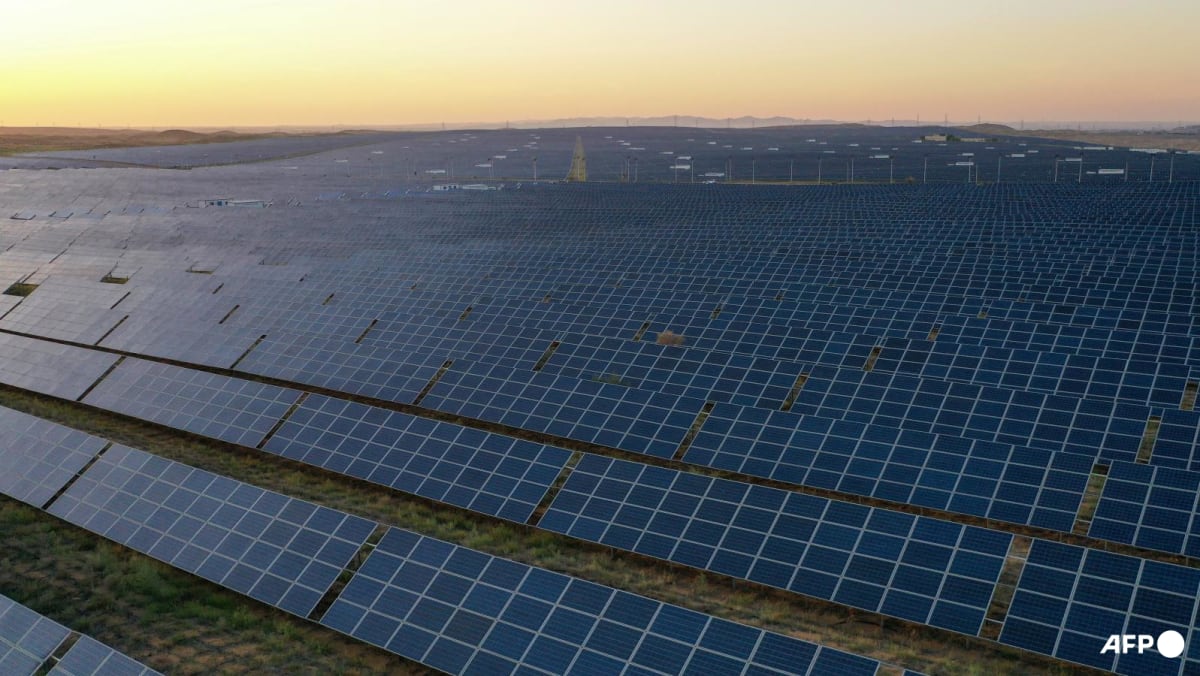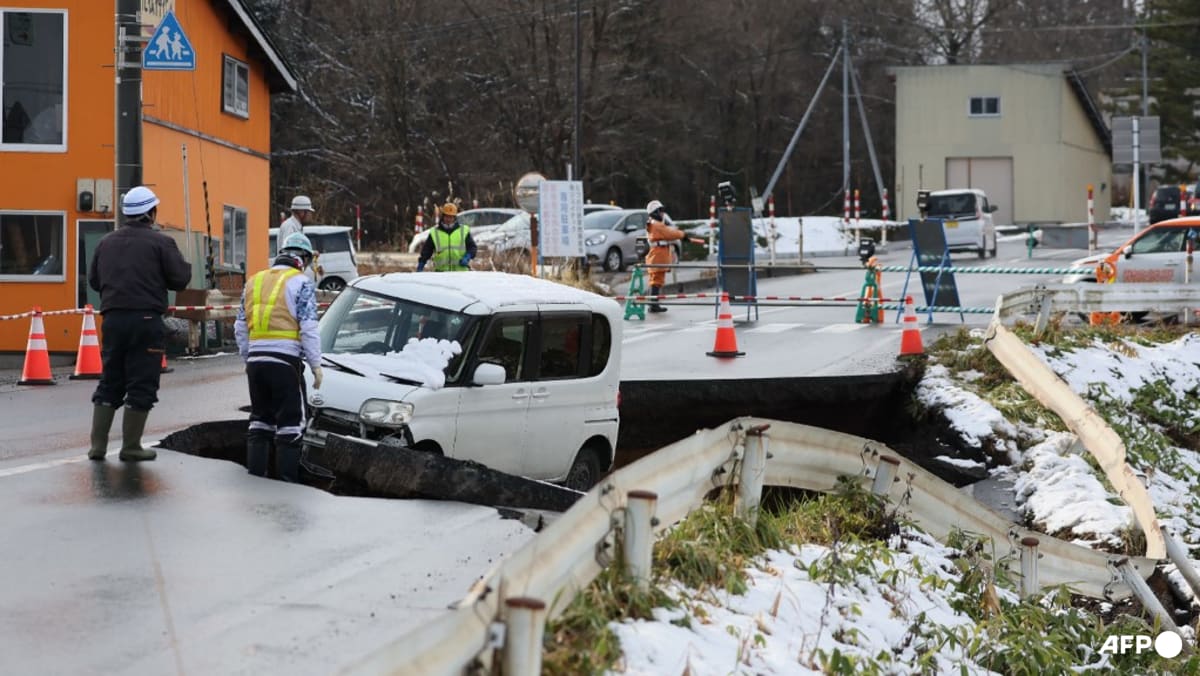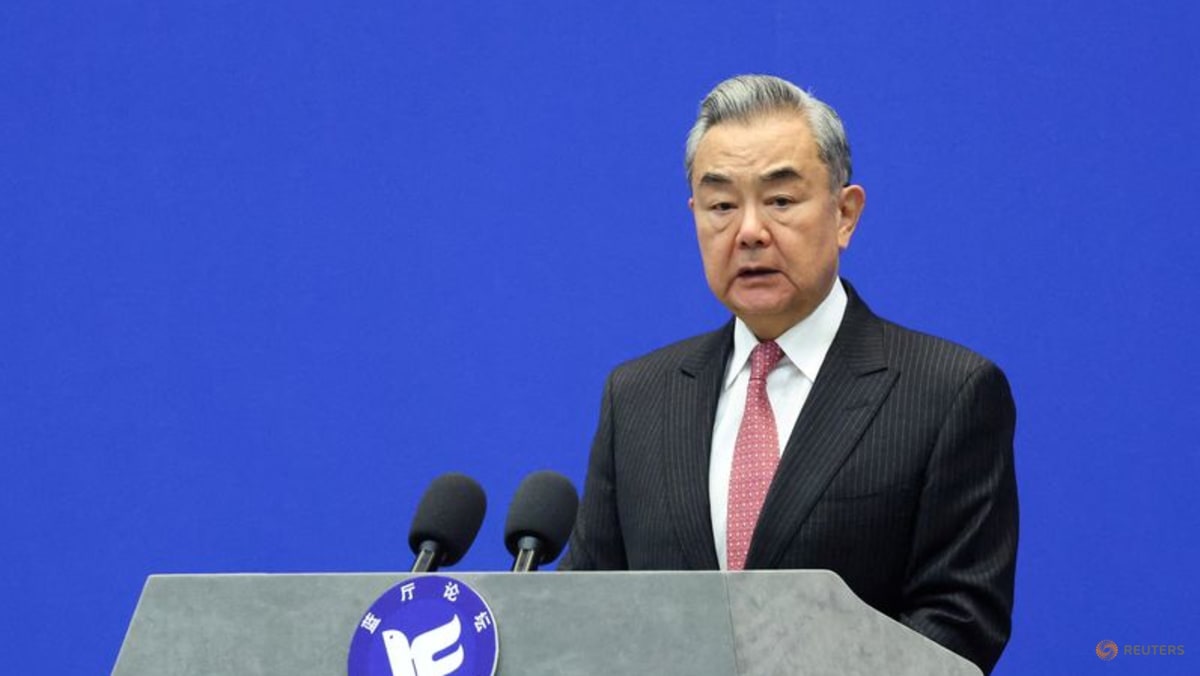China’s solar sector blazes trail in commitment to renewables

YINCHUAN, China: Hundreds of rows of gleaming panels blanket swathes of scrubby sand at sunset in a remote northern Chinese desert – once the biggest solar farm in the world.
On the edge of the forbidding Tengger desert, the solar park produces 1.5 gigawatts (GW) of power – but it has since been eclipsed and the largest is now further west with more than double the capacity.
China, the world’s biggest emitter of greenhouse gases, is building almost twice as much wind and solar capacity as every other country combined.
Last week, its wind and solar capacity overshot a target set by President Xi Jinping nearly six years ahead of schedule.
The vast solar arrays in the Ningxia region are a testament to a state-led industrial policy that has driven that breakneck growth.
South of the regional capital Yinchuan, huge lorries roar down a highway flanked by photovoltaic panels and wind turbines stretching to the horizon.
Ningxia, like much of China’s northwest, is sparsely populated and sun-soaked, pockmarked with small farms, vineyards and hulking power stations.
This geography makes it a prime location for generating solar power, which is then sent to China’s eastern and southern provinces where electricity demand is highest.
“China’s solar energy is developing at an unprecedented pace and scale,” said analyst Wu Di from Peking University’s Institute of Energy.
The country increased its installed solar capacity by more than 55 per cent last year, according to the National Energy Administration.
China now accounts for over 40 per cent of the total installed capacity worldwide, said Wu.
“NEED FOR COAL WANING”
Beijing aims to bring emissions of planet-heating carbon dioxide to a peak by 2030 and to net zero by 2060, part of its commitments under the Paris climate accord that seeks to limit global warming to 1.5 degrees Celsius above pre-industrial levels.
“Carbon can’t peak unless incremental consumption demand is covered entirely by incremental growth in clean energy,” said David Fishman, a senior manager at the Lantau Group specialising in China’s power sector.
“Incremental solar capacity growth is an important part of making sure all power demand growth is met by clean sources.”
The government only permitted around nine GW of new coal power in the first half of 2024, a year-on-year reduction of 83 per cent, according to a report published this month by the Centre for Research on Energy and Clean Air.
“With new renewable energy installations now capable of meeting all incremental power demand in China, the need for new coal is waning,” the Finland-based independent research group said.
But it also warned that construction continued on existing coal projects, potentially slowing Beijing’s energy transition.
Source: CNA















